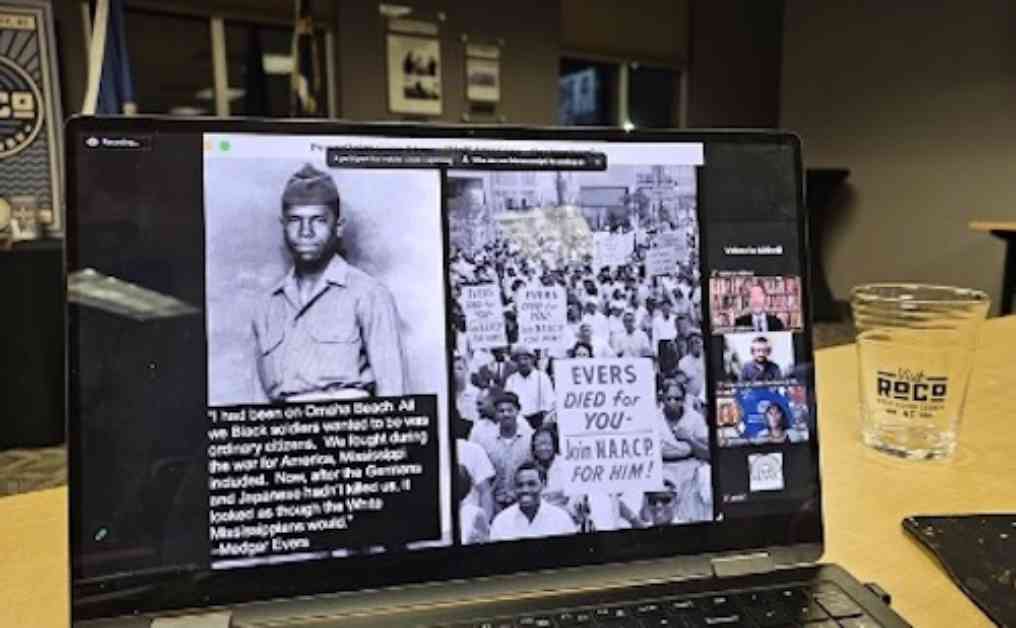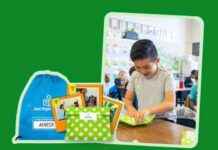This school year marks my 20th year in education and my 12th year at Rockingham Early College High School in Wentworth, NC. Our school is a five-year program that works to create first-generation college students. North Carolina is a leading state in the number of “early colleges,” which allow students to earn a college degree with their high school diploma. As the first person in my immediate family to graduate with a bachelor’s degree, this mission is near and dear to my heart.
I live in a rural community, and unfortunately, a county with one of the highest poverty rates in North Carolina. So, I know firsthand how important equitable access to resources is, and how hard we educators work to set our students up for success. Teachers in rural areas are exceptionally creative, working around limited library access, funding restrictions, and the ever-present battle with scaling best practices to support their students.
I always work to make my lessons both informative and accessible for each kid. Finding interesting resources goes a long way in boosting my students’ engagement with the material, better positioning them for lifelong success. I do that by finding content that nurtures their curiosity around civics, so they can leave my class informed, engaged, and inspired.
Here are some of my favorite (free!) tools and tricks, so all students can be excited about civics:
iCivics
iCivics offers free, nonpartisan classroom resources on civics, government systems and operations, and U.S. history. The materials are aligned to state standards and designed to encourage students to engage with complex content and build interest in politics and current events. There are resources available for grades preK-12, so teachers at every level of school can find relevant and informative materials for their students.
This is a great resource for civics teachers to utilize in the classroom. The information is heavily vetted–I can trust its correctness without having to check it again. I use it to support my lesson planning and to supplement that material with content students would find exciting, like online games and activities. Students can argue actual Supreme Court cases, practice advising the president in key historical moments, learn to build and balance national budgets, and more.
My favorite is The “Federal” in Federalism lesson. This lesson is part of the Constitution unit and is available in English and Spanish with several integration options, so the material can be adapted to whatever your classroom needs may be. In the lesson, students learn how to differentiate between state and federal power, gain an understanding of where that power comes from, and can connect and contrast this information to other government systems to create a more dynamic conversation around important decisions in U.S. history.
iCivics takes a topic that can be sort of sedate and makes it engaging and interesting. From lessons focused on the U.S. revolution to more recent discussions on rights and liberties, there are lesson plans and activities available for whatever unit your students need.
America’s Field Trip
America’s Field Trip by America250 and Discovery Education is a nonpartisan national contest for students in grades 3-12 to celebrate the 250th anniversary of the signing of the Declaration of Independence. Students submit original artwork or a written piece responding to the prompt “What does America mean to you?” to highlight young voices during this historical milestone for the United States. Contest winners get to participate in behind-the-scenes experiences at iconic American historical and cultural sites as part of America’s Field Trip.
As part of the teachers’ advisory group for America250 and as one of the fellows in the America 250 NC Freedom Fellows’ inaugural cohort, I got incredible tools and resources that help students understand our state’s unique and diverse history and the important role it played in the American Revolution. As part of the cohort and with the free, standards-aligned resources from America250 available to all (including the contest for students), I get to try new technologies and ideas right in my classroom.
I specifically love the contest as it’s a chance for students to tap into their individual interests and emphasize their skills and talents in their submission. Students get to compete and interact with peers not only in their own school but from around the country, which brings them different perspectives, new ideas, and, in some cases, new friendships. I see the difference having the freedom to be creative for an assignment has on students when they aren’t thinking about it impacting their GPA.
There are also peripheral benefits to students being part of community projects and national contests like America’s Field Trip. One big benefit is the prizes: a private guided tour of Yellowstone National Park in Montana and Wyoming or a candlelight tour of Fort Point at the foot of the Golden Gate Bridge in San Francisco, California. I wish there was a teacher version of the prizes!
These community-based projects encourage students to take ownership of their learning and instill a sense of responsibility and connection to their local community. This enhances their educational experience and cultivates a generation of informed, active citizens who are equipped to contribute positively to society.
Picture books
One of my all-time favorite resources to use in my lessons are picture books–yes, picture books in a high school classroom! Picture books are an undervalued and underutilized form of information as our students get older. But they are a staple of early education for a reason, and should be used more often as a creative way to present complex information.
Picture books can help break a complicated topic into easily digestible pieces, acting as an accessible and engaging entry point for students. Children’s books are designed to grab the attention of the reader and keep it. There are a ton of authors who take key moments in history, complicated government systems, and other civics concepts and turn them into children’s books that can be used by students of all ages.
I combine the picture books with Gilder Lehrman essays in my classroom. They are at an early college level, which fits in nicely with my students reading college-level literature. The length is manageable for a classroom setting, and the essays cover a wide variety of topics. This allows me to be creative in how they connect to our lessons and the picture books complement the material nicely.
Picture books are also a fantastic way for teachers to learn more topics–they help me dive into new concepts all the time! Remember the guy from Jeopardy! a couple of years ago who said he used children’s books to study? That was James Holzhauer, and he is the third highest winning contestant ever on the show. He swears by using children’s books to learn and maintain information, as they are full of pictures and infographics and engaging language that keeps the audience entertained.
This principle can be extended to the classroom. My students love using picture books as part of our lessons–they feel like it is a brain break while I know they are really soaking up even more information.
My advice: Model what you teach
As I encourage my students to get involved in civics, I do the same. That may sound like a lot, but I keep it simple. My involvement with our local museum, the Museum and Archives of Rockingham County, and the creation of community service projects like The Rural Experience in America Community Civics through Historical Inquiry by the NCHE, have spurred my interest in extending teaching beyond the classroom walls.
Resources like the ones I recommended here make a difference not only in my classroom, but also in the personal and academic growth of my students. When students sense that you are all-in for them, they are more likely to give you their best in the classroom. That, in turn, makes for less hectic days with better classroom management. Having students excited about the lesson kickstarts a transformation in student and teacher alike that helps refuel that passion for learning about–and being a part of–history.







